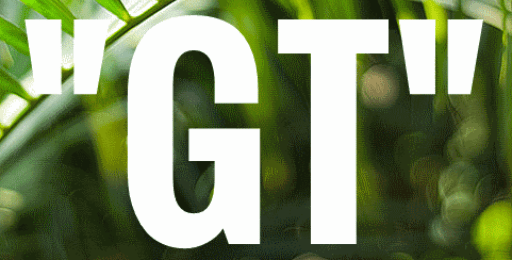Can we measure well-being? Rethinking ‘sustainability’ in nature-based tourism

Has ‘sustainability’ in travel & tourism become too narrowly focussed on a single ‘P’, Planet, sidelining the well-being of people?
Beth Allgood thinks it may have, especially in the nature-based and ecotourism niches.
Ms Allgood proposes how we might measure well-being in order to manage it. It’s her second “Good Tourism” Insight.
[You too can write a “GT” Insight.]
Sustainability must include people
When we in the tourism sector talk about sustainability, the focus often turns to environmental metrics: hectares protected, emissions reduced, water saved.
These are essential, but they only tell half the story. What about the people living there? How do we know if tourism is truly helping local communities?
For travellers, sustainability often means a destination is and remains authentic, vibrant, and resilient, not just scenic. Are the companies travellers support improving lives, or just minimising harm?
What sets nature-based tourism apart is not only care for the land but also care for the people who have long stewarded that land. That means taking community well-being as seriously as carbon offsets.
But how do you measure something as intangible as community well-being?
I believe you can, and you must. And with the right tools, you can do it in a rigorous, respectful, and meaningful way.
Also read Beth Allgood’s first “GT” Insight: “Where next for wildlife conservation, ecotourism, & community well-being?”
Redefining what counts
Many tourism businesses already give back. They donate to schools, support clinics, and create jobs. These efforts matter but they don’t always reflect how people feel about tourism or how it affects their daily lives.
Do residents feel a sense of belonging and control? Are they truly better off? Are they invested in tourism? Do they feel connected to the whole tourism enterprise? If so, do they feel positively about the industry?
How do you measure something as intangible as well-being, or ‘happiness’ (often used as a shorthand for how people feel about their lives)?
We need tools that capture both tangible outcomes and lived experiences.
At OneNature, the organisation I founded, we’ve spent more than five years exploring this with community leaders and researchers.
Most recently, a team from Columbia University’s Sustainability Management program helped refine how well-being can be measured in communities that live close to nature.
Their research (PDF) confirmed what we’ve long believed: Measuring sustainability requires both objective and subjective information.
That means tracking all the concerns people have like the material concerns of income and access to services, and more intangible concerns such as their level of trust and sense of connection to place.
Only then can we understand tourism’s full impact and improve upon it.
How do we measure what matters?
To help tourism companies, conservation organisations, and communities track well-being, we developed the Wild Happiness Approach. This is a survey and participatory process that blends global research with local voices.

We’ve used it in projects in Kenya, Laos, Nepal, and Rwanda.
In Rwanda, with support from Piper & Heath and in partnership with Red Rocks Initiative for Sustainable Development (thanks to an introduction facilitated by The “Good Tourism” Blog), the Wild Happiness Approach revealed key insights about communities near Volcanoes National Park.
Life satisfaction and social trust were high, but residents raised concerns about economic opportunity and the impacts of park expansion. The data also confirmed a strong link between cultural identity and environmental well-being.
“The Wild Happiness Survey didn’t just capture our challenges, it highlighted the strength of our communities, their connection to the environment, and cultural resilience.” _ Greg Bakunzi, Executive Director, Red Rocks Initiative for Sustainable Development, Rwanda
Insights like these help tourism stakeholders make better decisions for people and nature.
Why should the tourism industry care?
Understanding community well-being isn’t just the right thing to do, it’s a smart investment.
Tourism companies that build trust with local communities are better positioned to:
- Promote peace and prevent or de-escalate conflict
- Develop long-term partnerships
- Protect the character and integrity of destinations and the people who live there
When communities thrive, conservation thrives. And when nature thrives, so does nature-based tourism.
Why now?
Social impact is never optional. Travellers, donors, and investors expect companies to demonstrate a positive difference, not just tick ESG boxes.
And with donor governments reducing support for communities around the world, tourism businesses have a unique opportunity to step up by partnering more intentionally with the people at the heart of their destinations.
The good news? This doesn’t just help communities, it strengthens business resilience, destination quality, and long-term sustainability.
Let’s stop guessing what matters. Let’s measure it.
What do you think?
Share your own thoughts in a comment below on how to measure well-being in a nature-based (or any other) tourism destination. (SIGN IN or REGISTER first. After signing in you will need to refresh this page to see the comments section.)
Or write a “GT” Insight or “GT” Insight Bite of your own. The “Good Tourism” Blog welcomes diversity of opinion and perspective about travel & tourism, because travel & tourism is everyone’s business.
“GT” doesn’t judge. “GT” publishes. “GT” is where free thought travels.
If you think the tourism media landscape is better with “GT” in it, then please …
About the author

Beth Allgood is the founder and president of OneNature, a US-based nonprofit helping communities and conservation partners measure and improve well-being.
With more than 25 years of experience in conservation, animal welfare, and community development, Beth believes true sustainability means honoring the interconnection of all beings. Through research, partnerships, and fieldwork, OneNature works to build a world in which people and nature thrive.
Featured image (top of post)
An energetic welcome to Red Rocks Rwanda. Pic taken September 2023 by David Gillbanks.





